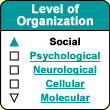|
|

The effects that lack
of sleep has on performance and perception are similar to those
of alcohol. The cumulative fatigue resulting
from a 12-hour work shift alters reaction time, logical reasoning,
hand-eye co-ordination, and decision-making in the same way
as a blood-alcohol level of about 0.05 grams per 100 millilitres.
Workers who are fatigued may still be able to perform simple,
routine procedures, but if they have to deal with a new situation
or a sudden emergency, they experience a lot of difficulties
and often make mistakes. |
In Canada, on the day
after the switch to daylight savings time, which causes people
to lose 60 minutes of sleep, the number of fatal accidents
jumps to 7% higher than the daily average. This number then
returns to its average level over the following days. Even
more surprisingly, the opposite pattern is seen in the fall:
the day after the return to standard time, when people get
an extra 60 minutes’ sleep, the number of fatal accidents
falls by 7%, and then rises back gradually to its average
level. |
|
|
With the advent
of mass production and the pressure for a more flexible work
force, many companies began making employees work rotating shifts
and night shifts.
To serve this new population
of night workers, some convenience stores and supermarkets
began staying open 24 hours per day. These stores of course
had to hire employees to work the extra hours, thus further
increasing the
cohort of night workers. This cohort also includes workers
providing essential services that must be available at all
times, such as hospital workers, police officers, and firefighters. |
|
However, many sleep specialists now think that this proliferation
of night work should be contained as much as possible, because
we now know that working at night permanently affects the quality
of sleep. Sleep, which is indispensable
for restoring our physical and mental abilities, can be greatly
disturbed by working irregular schedules or working at night.
The problems that people have in adjusting
to night work resemble those associated with jet lag. But unlike
air passengers, who can adapt to the time at their destination,
night workers must continue to live in a society that operates
in the daytime. People who come home from a night shift and try
to go to bed in the morning are exposed to the light of the rising
sun. Many other external cues further remind them that they are
out of sync with their environment. These external stimuli induce
abnormalities in the night workers’ circadian
patterns of hormone secretion–abnormalities that persist
even after they have been working night shifts for several years.
These discrepancies between the body’s
internal rhythms and the cues that it receives from the outside
world in fact result in two distinct problems.
First, people who work night shifts
must constantly fight the body’s natural tendency to want
to sleep at night. As they do their work, they are struggling
against a physiological state of rest and hence cannot help performing
less accurately and effectively.
The second problem is sleep deprivation: people who work at night
do not sleep so well during the daytime, because the daylight places
their entire physiology in a mode that favours activity. Some night
workers may get only 5 or 6 hours of poor-quality sleep per night.
As one might well imagine, this chronic sleep deprivation (see
sidebar) not only increases the risks of workplace accidents, but
also, in the long term, is accompanied by a significant increase
in various types of physical and mental health problems, such as
cardiovascular disorders and depression.
Night work can be organized in two different ways: steady
night shifts on a regular schedule (for example, 11:00
PM to 7:00 AM, 5 days per week, every week) or rotating
night shifts on a less regular schedule (for example,
11:00 PM to 7:00 AM one week, 7:00 AM to 3:00 PM the next,
3:00 PM to 11:00 PM the next, and so on).
When people work steady night shifts for long periods, their
bodies can adapt to some extent, though their circadian rhythms
will still be somewhat out of phase because of the influence
of daylight. But when people work rotating night shifts,
the disturbances in their circadian rhythms are more pronounced.
Rotating among a day shift, an evening shift, and an overnight
shift makes it very hard for the body’s internal cycles
to become synchronized with the usual external cues, so the
body must adjust itself perpetually.
A
variety of strategies have been proposed for reducing the influence
of these external cues so that people who work steady or
rotating night shifts can get better sleep.
|
|





